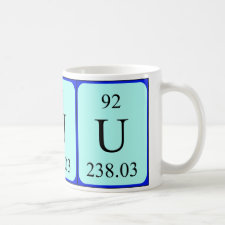
Authors: Monier M, Elsayed NH
Article Title: Selective extraction of uranyl ions using ion-imprinted chelating microspheres.
Publication date: 2014
Journal: Journal of Colloid and Interface Science
Volume: 423
Page numbers: 113-122.
DOI: 10.1016/j.jcis.2014.02.015
Alternative URL: http://www.sciencedirect.com/science/article/pii/S0021979714000915
Abstract: In this work, uranyl complex with Schiff base derived from condensation of p-aminostyrene and salicyaldehyde (HASS) was synthesized. Both ligand and uranyl complex were characterized using elemental analysis, FTIR, 1H and 13C NMR spectra. The complex was then copolymerized with styrene and divinylbenzene cross-linker using potassium persulfate free radical initiator through emulsion polymerization technique. The uranyl ions were then leached out from the cross-linked network to finally produce uranyl ion-imprinted microspheres (U-PASS), which were investigated using SEM and FTIR. The effect of various significant parameters such as pH, temperature, contact times and initial uranyl concentration on the removal of uranyl from aqueous solution was examined and the results indicated that the adsorption was exothermic in nature and the kinetics of adsorption fit with the second-order kinetic model. Also, Langmuir adsorption isotherm exhibited the best fit with the experimental results with maximum adsorption capacity 147.8 mg/g. Moreover, the selectivity studies revealed that the ion-imprinted microspheres resin exhibited an obvious affinity toward the uranyl ions in presence of other interfering metal ions compared to the non-imprinted resin
Template and target information: uranyl ion
Author keywords: Ion-imprinting, Salicyaldehyde, p-Aminostyrene, adsorption, uranyl ion



Join the Society for Molecular Imprinting

New items RSS feed
Sign-up for e-mail updates:
Choose between receiving an occasional newsletter or more frequent e-mail alerts.
Click here to go to the sign-up page.
Is your name elemental or peptidic? Enter your name and find out by clicking either of the buttons below!
Other products you may like:
 MIPdatabase
MIPdatabase









